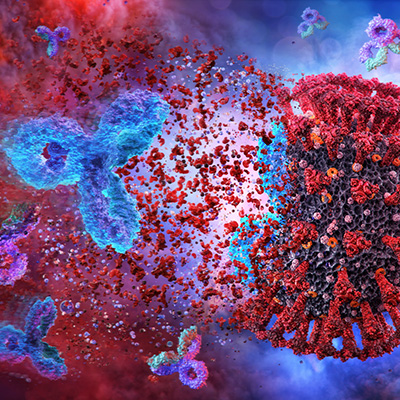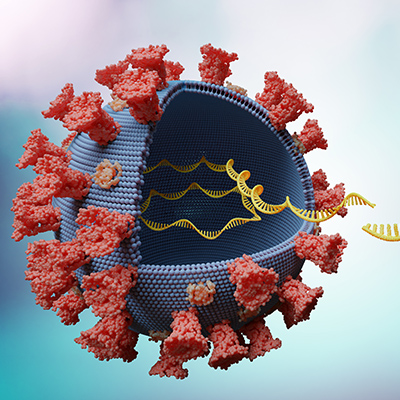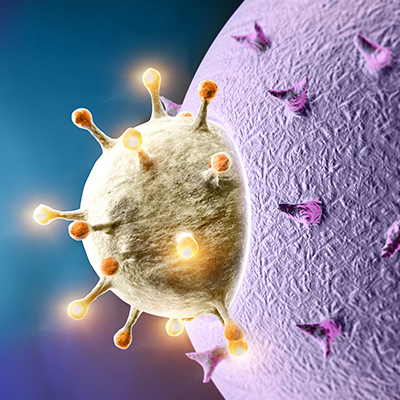July 9, 2020 -- Structural comparison between a bat coronavirus and SARS-CoV-2 reveals specific characteristics that make the new virus more pathogenic, according to a new article published in Nature Structural and Molecular Biology on July 9.
Early in the COVID-19 pandemic, the bat coronavirus, RaTG13, was identified as a likely evolutionary precursor and closest known relative of the pathogen. However, researchers are uncertain as to how the evolution occurred. It could have been by selection in an animal host before zoonotic transfer, possibly by intermediate host, or natural selection in humans following direct zoonotic transmission from bats.
The pathogenicity of SARS-CoV-2 is thought to be attributable to the acquisition of a furin cleavage site between the S1 and S2 subunits of the spike protein. The spike protein mediates attachment and fusion to the human cell-surface-membrane protein angiotensin-converting enzyme 2 (ACE2). The addition of a four amino acid insertion, PRRA, in the receptor-binding domain of the SARS-CoV-2 spike protein added a furin cleavage site. Similar cleavage sites were found in other coronaviruses (HKU1 and MERS-CoV) and are often associated with increased pathogenicity of other viruses.
To understand the evolutionary origin of the SARS-CoV-2 virus and the emergence of the COVID-19 pandemic, researchers from the Francis Crick Institute compared the spike glycoproteins of SARS-CoV-2 and RaTG13, investigated their affinities for human ACE2, and explored furin cleavage.
First, the researchers determined the structure of the furin-cleaved spike protein of SARS-CoV-2 by cryo-electron microscopy (cryo-EM). The particles fell into three categories: closed form (34%), intermediate form (39%), and open form (27%). In the closed conformation, the surface of the receptor-binding domain is buried inside the trimer and not available for receptor binding. In the open conformation, two of the receptor-binding domains remained closed but the third rotates so that it can interact with ACE2.
The researchers next compared the cryo-EM structures of the spike from RaTG13 and uncleaved SARS-CoV-2. Overall, the bat virus spike protein is similar to that of the uncleaved SARS-CoV-2 closed form. There is a 97.8% conservation of sequences in the spike protein ectodomain, but there are several substitutions in the receptor-binding domain. Moreover, the uncleaved SARS-CoV-2 spike trimer is significantly more stable than the bat virus protein or cleaved SARS-CoV-2 spike protein.
The team suggested that the increased stability could be required to offset the loss of stability that occurs with furin cleavage. The presence of the furin cleavage site in the spike protein of SARS-CoV-2 likely facilitates the conformational change required for receptor-binding domain exposure and binding to surface receptors.
When the researchers compared the ACE2 domain bound to the receptor-binding domain of SARS-CoV-2 and bat virus spike trimers, they found that SARS-CoV-2 binds approximately 1,000 times more tightly to ACE2 than the bat virus protein.
The authors noted that the high-resolution cyro-EM generated structure of the SARS-CoV-2 spike protein they identified is more complete than previous versions and may provide important insights for vaccine design.
Together, the team's structural and biochemical data reveal that RaTG13 would not be able to bind to human ACE2 and is therefore unlikely to infect humans. Instead, based on the number and structural locations of amino acid sequence variations, they suggested that recombination of distinct coronavirus genomes leads to the generation of SARS-CoV-2.
Do you have a unique perspective on your research related to molecular biology or biochemistry? Contact the editor today to learn more.
Copyright © 2020 scienceboard.net










